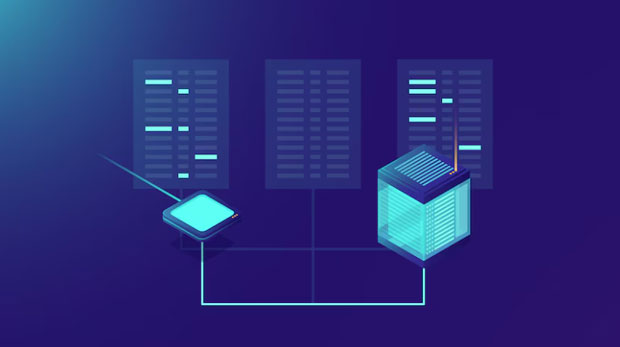In cross-platform scraping scenarios, which one has better adaptability: PYPROXY or HydraProxy? This article explores the comparison between Pyproxy and HydraProxy in terms of their capabilities, features, and overall performance when applied to cross-platform scraping tasks. We will dive into the key aspects of both tools, including their setup, flexibility, proxy management, and compatibility with various platforms. Through this comparison, we aim to provide a comprehensive understanding of which proxy solution better suits the needs of those engaged in web scraping across different systems. Web scraping has become an essential tool for businesses, researchers, and developers who need to gather vast amounts of data from the web. As the demand for data scraping has increased, so has the need for reliable and efficient proxy tools. Two popular solutions in this domain are Pyproxy and HydraProxy. Both tools have their own strengths and weaknesses, but when it comes to cross-platform scraping, which one provides better adaptability? This article will delve into the core aspects of both Pyproxy and HydraProxy, including ease of setup, proxy management, system compatibility, and their ability to handle large-scale scraping projects across different platforms.Pyproxy OverviewPyproxy is a Python-based proxy management tool designed to streamline the process of handling proxies for web scraping tasks. Pyproxy works by providing a robust framework that simplifies proxy rotation, error handling, and integration with various scraping scripts. Its primary feature is its ability to rotate proxies efficiently, ensuring that users can scrape data without being blocked by websites that detect repetitive requests from a single IP address.One of the key advantages of Pyproxy is its open-source nature, which makes it highly customizable. It also supports a wide range of proxy types, including residential proxies, data center proxies, and rotating proxies. This flexibility allows users to choose the best proxies for their specific needs, such as location-based scraping or anonymity.HydraProxy OverviewHydraProxy is another popular proxy solution, specifically designed for high-performance and large-scale web scraping tasks. It is a commercial service that provides users with access to a pool of rotating proxies. HydraProxy offers features such as automatic IP rotation, geo-targeting, and customizable proxy pools, making it an ideal choice for those engaged in large-scale data extraction across multiple platforms.HydraProxy’s key selling point is its ability to manage millions of proxy requests without compromising speed or reliability. It is particularly suited for users who need to scrape data from websites that employ advanced anti-scraping mechanisms, as HydraProxy is built to handle such challenges effectively. The service also provides detailed analytics and reports to help users monitor and optimize their scraping operations.Cross-Platform CompatibilityWhen it comes to cross-platform compatibility, both Pyproxy and HydraProxy offer distinct advantages. Pyproxy, being a Python-based solution, is highly compatible with various operating systems, including Windows, Linux, and macOS. Users can integrate it into any Python environment, making it versatile for use in different platforms. Its open-source nature allows for easy adaptation and modification based on the specific requirements of the user's scraping task.On the other hand, HydraProxy, being a commercial service, is designed to work seamlessly across multiple platforms as well. Its cloud-based infrastructure ensures that users can access their proxy services from any device with an internet connection. While HydraProxy is more of a plug-and-play solution, it is optimized for high-performance scraping tasks and can be integrated with various scraping frameworks, including Python-based solutions, without the need for extensive setup.Proxy Management and RotationEfficient proxy management and rotation are crucial aspects of any successful web scraping project, especially in cross-platform environments where different systems may introduce unique challenges. Both Pyproxy and HydraProxy offer advanced proxy rotation features, but they do so in slightly different ways.Pyproxy allows users to manage proxies via Python scripts, providing full control over how proxies are rotated and when they are switched. Users can configure proxy rotation based on specific intervals or request patterns, ensuring that IP addresses do not get blocked by target websites. Additionally, Pyproxy supports multi-threading, allowing users to run parallel scraping tasks across different proxies to maximize efficiency.HydraProxy, on the other hand, automates the proxy rotation process entirely. Its rotating proxy pool automatically switches IP addresses after every request, which significantly reduces the risk of IP bans. This hands-off approach makes HydraProxy a more convenient option for those who require less manual configuration and want a hassle-free solution. The service also provides geo-targeting features, allowing users to select proxies based on specific geographic regions, further enhancing the flexibility of the tool.Scalability and PerformanceScalability and performance are two critical factors to consider when choosing a proxy solution for cross-platform scraping tasks. Pyproxy, being an open-source tool, allows users to scale their scraping operations based on their hardware resources. While it can handle large-scale scraping tasks, the performance of Pyproxy may be limited by the user's infrastructure and the quality of the proxies they use. Users may need to invest in powerful servers or cloud resources to maximize the tool’s performance for large-scale operations.HydraProxy, however, excels in scalability. As a commercial service, it offers users access to a vast pool of rotating proxies, which can handle millions of requests per day without any noticeable slowdowns. Its cloud-based architecture ensures that users can scale their scraping operations effortlessly, without worrying about the underlying infrastructure. For businesses or developers engaged in large-scale data scraping, HydraProxy’s scalability makes it a more attractive option.Ease of Use and SetupThe ease of use and setup is another important factor to consider, especially for users who are new to web scraping or proxy management. Pyproxy, while highly customizable, requires a certain level of technical knowledge. Users must be comfortable working with Python and managing proxy lists, which may pose a challenge for beginners. However, for advanced users, Pyproxy’s flexibility allows for complete control over the scraping process.HydraProxy, in contrast, is designed to be more user-friendly. The service provides a simple API and dashboard for users to manage their proxy settings and monitor their scraping operations. The setup process is straightforward, with minimal configuration required. For users who prioritize ease of use and quick implementation, HydraProxy is a more suitable option.Cost ConsiderationsCost is always a factor when selecting a tool for web scraping, especially for businesses that need to manage large-scale operations. Pyproxy is open-source, meaning that it is free to use. However, users may need to pay for the proxies themselves, depending on their requirements. While this can be a more cost-effective option for some users, the total cost may vary depending on the quality and quantity of proxies needed.HydraProxy, as a commercial service, comes with a subscription fee. However, this fee covers the cost of the proxies and the infrastructure, making it a more predictable option for users who need high-performance proxies without the hassle of managing them. The cost of HydraProxy can vary depending on the subscription plan and the volume of proxy requests, but for users who need scalability and reliability, the cost may be justified.In conclusion, both Pyproxy and HydraProxy offer distinct advantages for cross-platform scraping, but the best choice depends on the user’s specific needs. Pyproxy is ideal for users who require a high level of customization and control over their scraping tasks, particularly if they are comfortable working with Python and managing proxies manually. Its open-source nature makes it a flexible and cost-effective solution, though it may require more technical expertise.On the other hand, HydraProxy excels in scalability, performance, and ease of use, making it the better choice for those engaged in large-scale scraping projects. Its automated proxy management and geo-targeting features provide a hassle-free solution for users who need to scrape data across multiple platforms without worrying about proxy management.Ultimately, the decision between Pyproxy and HydraProxy comes down to the user’s level of technical expertise, project scale, and preference for either a customizable open-source tool or a fully managed, high-performance proxy service.
Oct 12, 2025



































































